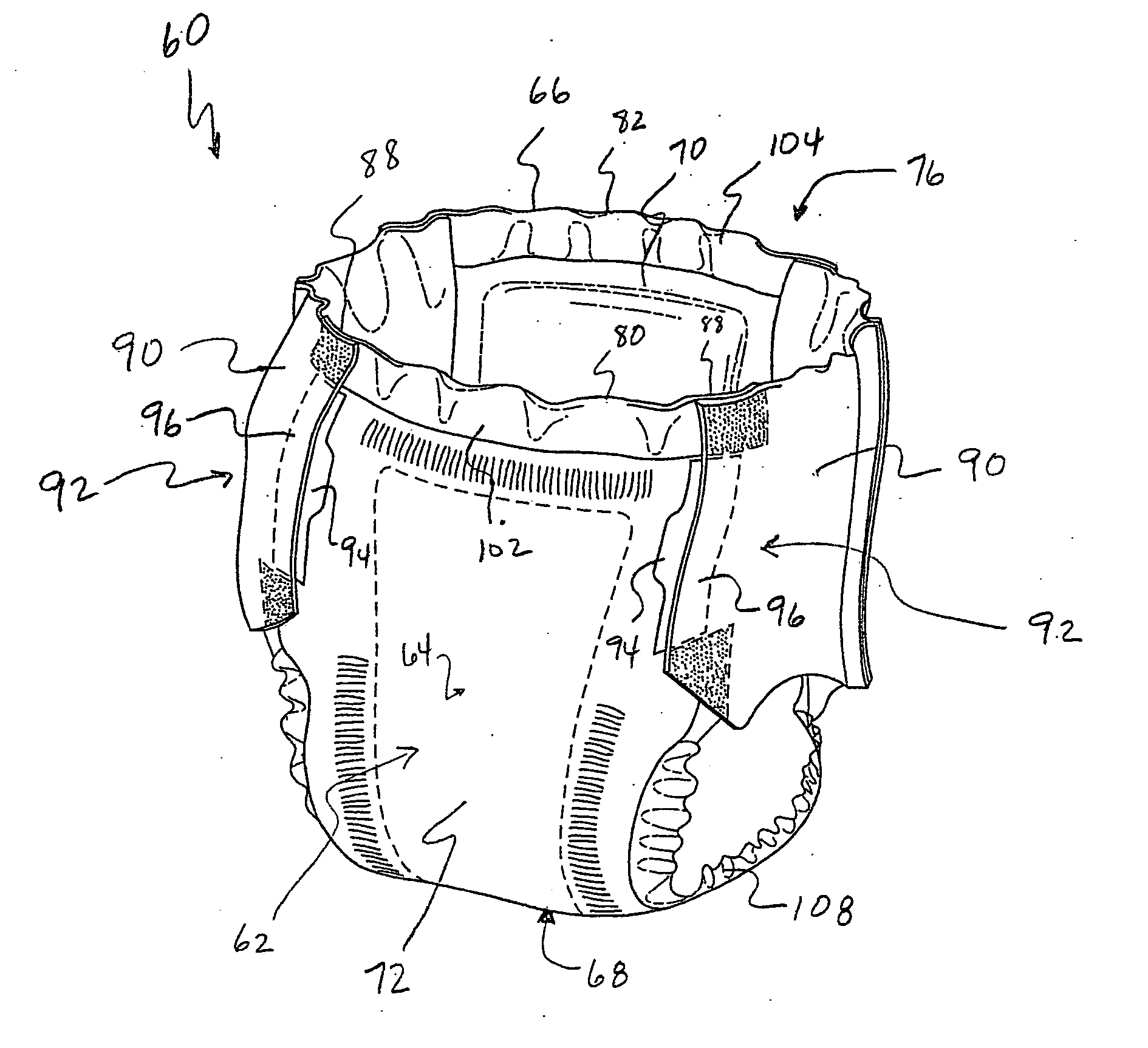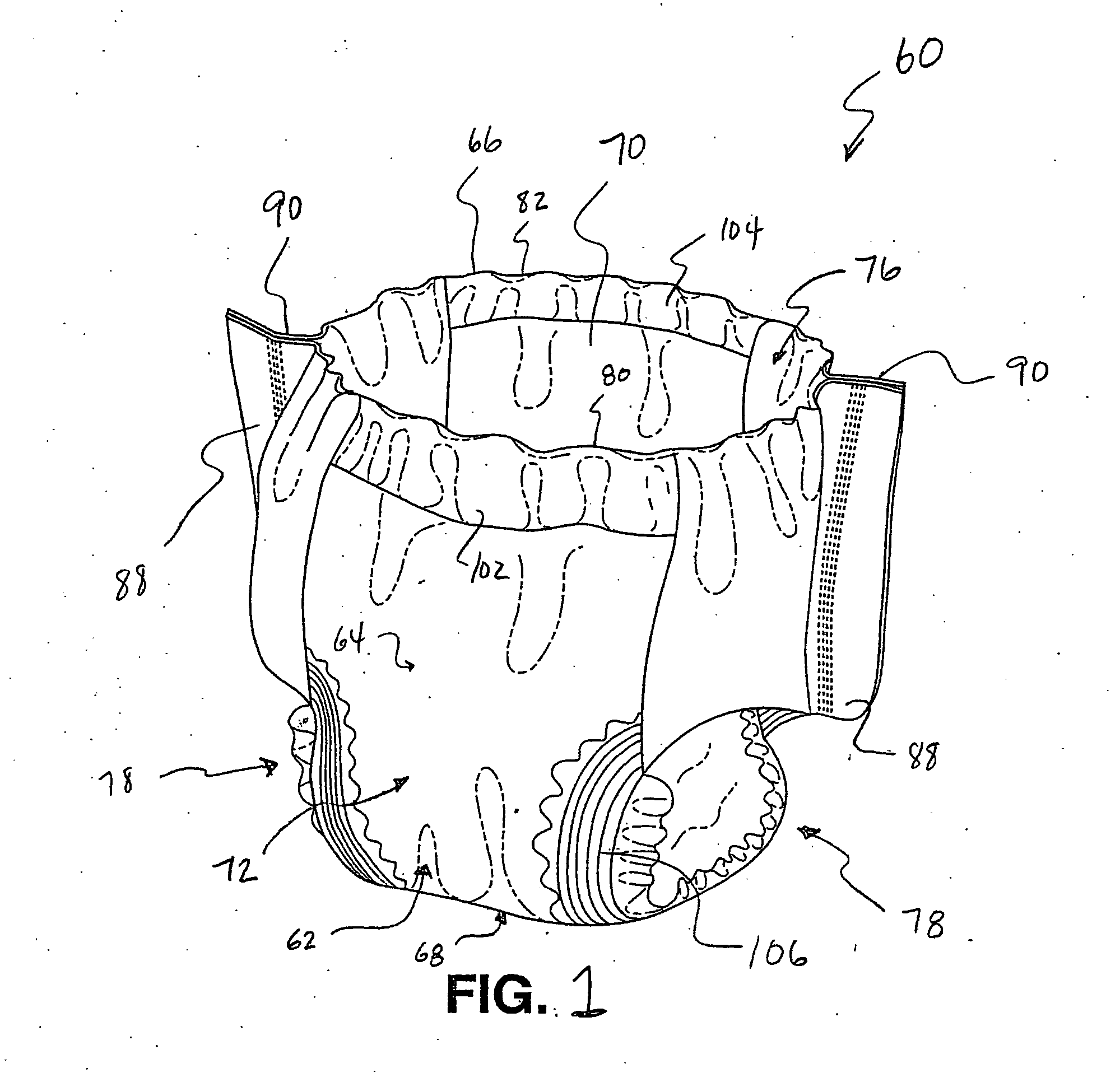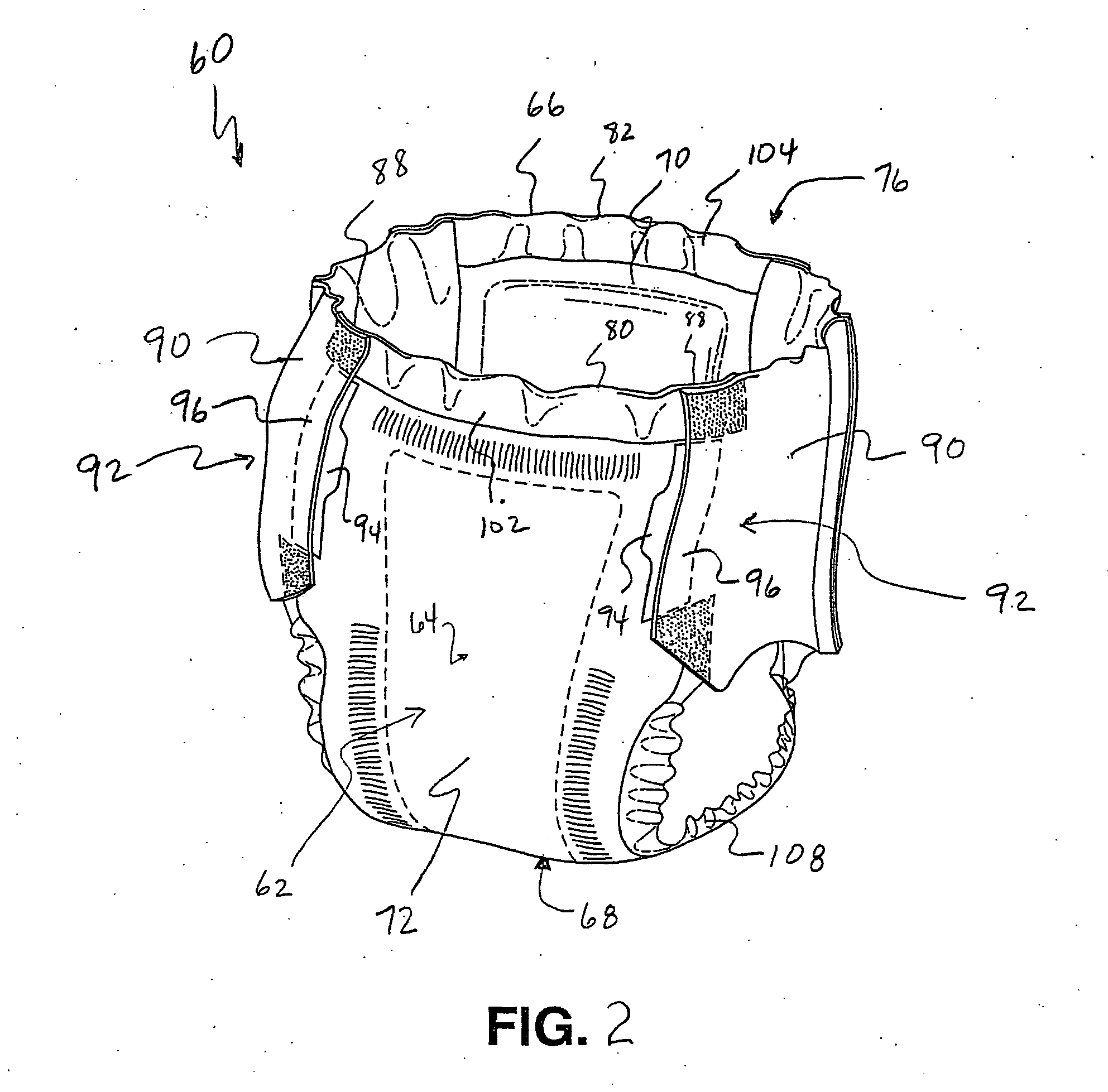Zoned absorbent structures and process for producing same
a technology of absorbent structures and absorbent materials, applied in the field of disposable consumers, can solve the problems of increasing the amount of trim waste generated, increasing the cost of reprocessing, and presenting particular challenges in the pre-processing of absorbent material roll process, and achieves the effect of less or no waste and higher basis weight area
- Summary
- Abstract
- Description
- Claims
- Application Information
AI Technical Summary
Benefits of technology
Problems solved by technology
Method used
Image
Examples
Embodiment Construction
[0043] The invention will now be described in detail with reference to particular embodiments thereof. The embodiments are provided by way of explanation of the invention, and not meant as a limitation of the invention. For example, features described or illustrated as part of one embodiment may be used with another embodiment to yield still a further embodiment. It is intended that the present invention include these and other modifications and variations as come within the scope and spirit of the invention.
[0044] The present method is particularly suited for the manufacture of pad structures from a web of absorbent material. The pads are intended for use in various consumer disposable absorbent products. Such products include, but are not limited to, diapers, children's training pants, feminine care articles (such as panty liners, pads, and interlabial products), incontinence articles, swim pants, and the like. The invention is not limited to any particular type or composition of...
PUM
 Login to View More
Login to View More Abstract
Description
Claims
Application Information
 Login to View More
Login to View More - R&D
- Intellectual Property
- Life Sciences
- Materials
- Tech Scout
- Unparalleled Data Quality
- Higher Quality Content
- 60% Fewer Hallucinations
Browse by: Latest US Patents, China's latest patents, Technical Efficacy Thesaurus, Application Domain, Technology Topic, Popular Technical Reports.
© 2025 PatSnap. All rights reserved.Legal|Privacy policy|Modern Slavery Act Transparency Statement|Sitemap|About US| Contact US: help@patsnap.com



